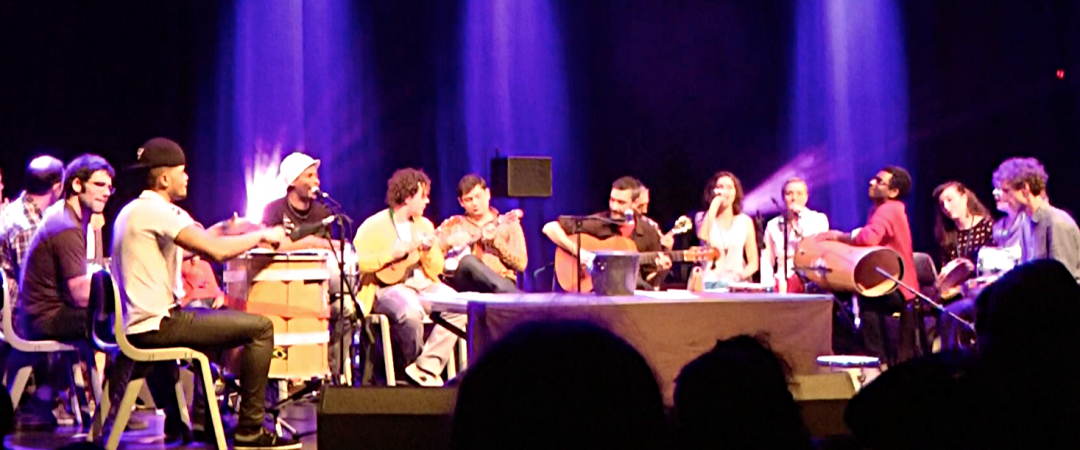
Brazilians of all races and social classes began to enjoy the dance, and it became a sense of happiness for the nation. Samba began to include elements of rock and jazz, bringing it to the mainstream. By the 1970s samba saw it’s rise as musicians modernized the dynamic samba batacuda style and fused it with modern harmony and instrumentation. By the 1950s samba cancao became overshadowed by samba de batucada, a more percussive and groovy style of samba. During this time of the 1930s, this type of dancing was introduced to the United States through a popular Broadway play and at the New York World’s Fair. The Brazilian singers and composers put samba cancao on the international radar. Samba cancao emphasized sentimental lyrics and highlighted melody over rhythm. Sambas of the 1920s and the radio era of the 1930s were slow and romantic and birthed a sub-genre known as “samba-cancao”. Samba music became very popular in song from and some of it’s earliest recordings date back to 1911. Marcha and Maxixe are Samba’s Brazilian predecessors that influenced Samba as well as Cuba’s Habanera and Germany’s polka. Throughout Samba’s development, a variety of influences shaped the flavor the music and dance.
A la samba meaning professional#
Some say that Samba was a result of middle class Afro-Brazilian music being elaborated on by professional Rio de Janiero musicians. Another argument suggests that it developed on the Paraiba Valley coffee plantations sitting just outside the capital. It is believed the term was associated with the Brazilian state of Bahian when Bahian ex-slaves brought dance to Rio de Janiero. Many agree that the word “samba” is derived from the Angolan Kimbundo term “semba” which is the navel thrust in dancing. Musicologists argue about its true origins. The lively dance moves and rich and syncopated rhythm have made it a South American favorite. It became the quintessential music and dance form of Rio de Janiero’s world famous carnival. Samba music started in the 19 th century and evolved in Rio de Janeiro, Brazil in the early 20 th century. While the Ballroom version has grown popular, originally Samba was a solo dance from Latin America. There are a variety of types of samba music and dancing. Samba dance holds a rich and cultural history. It may be danced with or without a partner. Syncopated rhythms, bouncing actions, and rolling hip movements characterize the dance. The artist is represented by the Pascal Polar gallery (Brussels, Belgium).The Samba is an energetic and lively dance that is currently popular in many parts of the world. He lives and works in Kinshasa, Democratic Republic of Congo.
A la samba meaning tv#
For Samba, this is not an act of narcissism rather, like an anchor on TV news broadcasts, he places himself in his work to report on what it means to be a successful African artist on the world stage.

From the late 1980s on, he himself became the main subject of his paintings. This canvases offer a running commentary on popular customs, sexuality, AIDS and other illnesses, social inequalities, and corruption. Samba's paintings of this period reveal his perception of the social, political, economic and cultural realities of Zaïre, exposing all facets of everyday life in Kinshasa. Followed the Pompidou Center(Africa Remix), Fondation Cartier, Guggenheim Museum in Bilbao, The Venice Biennale, Museum Kunst Palast in Dusseldorf, National Museum of African Art in Washington DC, Museum of Fine Arts Houston, Museum Ludwig in Cologne, Provincial Museum Voor Moderne Kunst in Ostende. His breakthrough was the exhibition Les Magiciens de la Terre ( Curator : Jean Hubert Martin) at the Centre Georges Pompidou in Paris in 1989, which made him known internationally. Indeed, the popularity of his paintings soon went beyond Kinshasa's city limits by the mid 1980s his work was gaining an international audience.

In the early 1980s he began signing his paintings "Chéri Samba: Artiste Populaire". It is at this time when he develops his signature style of combining paintings with text. At the same time he also became an illustrator for the entertainment magazine Bilenge Info. In 1972, at the age of 16 he left the village and the school to find work as a sign painter in the capital Kinshasa, on Kasa Vubu Avenue in Kinshasa from this circle of artists (which included Moke, Bodo, and later Samba's younger brother Cheik Ledy among others) arose one of the most vibrant schools of popular painting in the twentieth century. His father was a blacksmith and his mother a farmer.

Born in 1956 in Kinto M'Vuila as the elder son of a family of ten children.


 0 kommentar(er)
0 kommentar(er)
